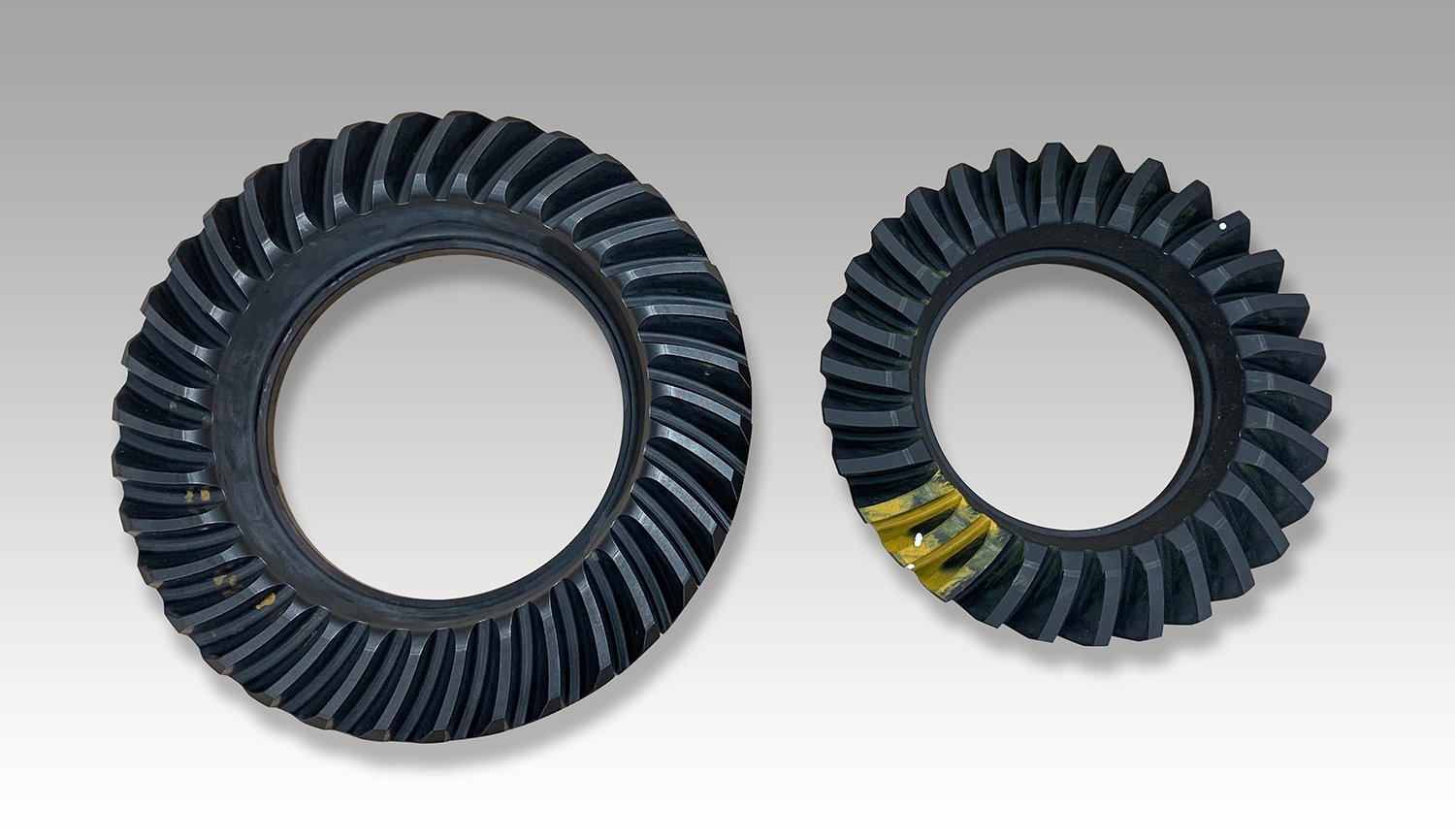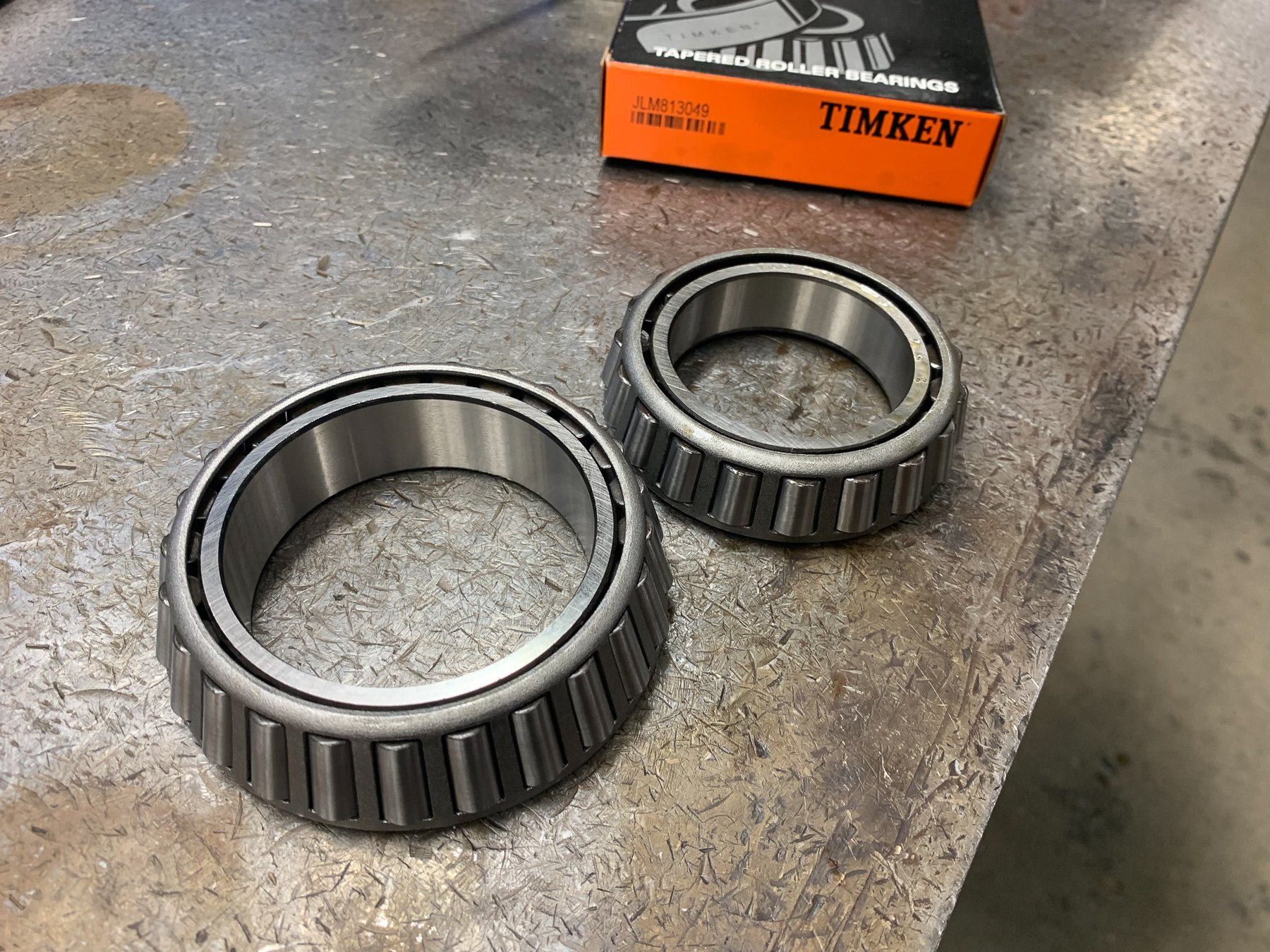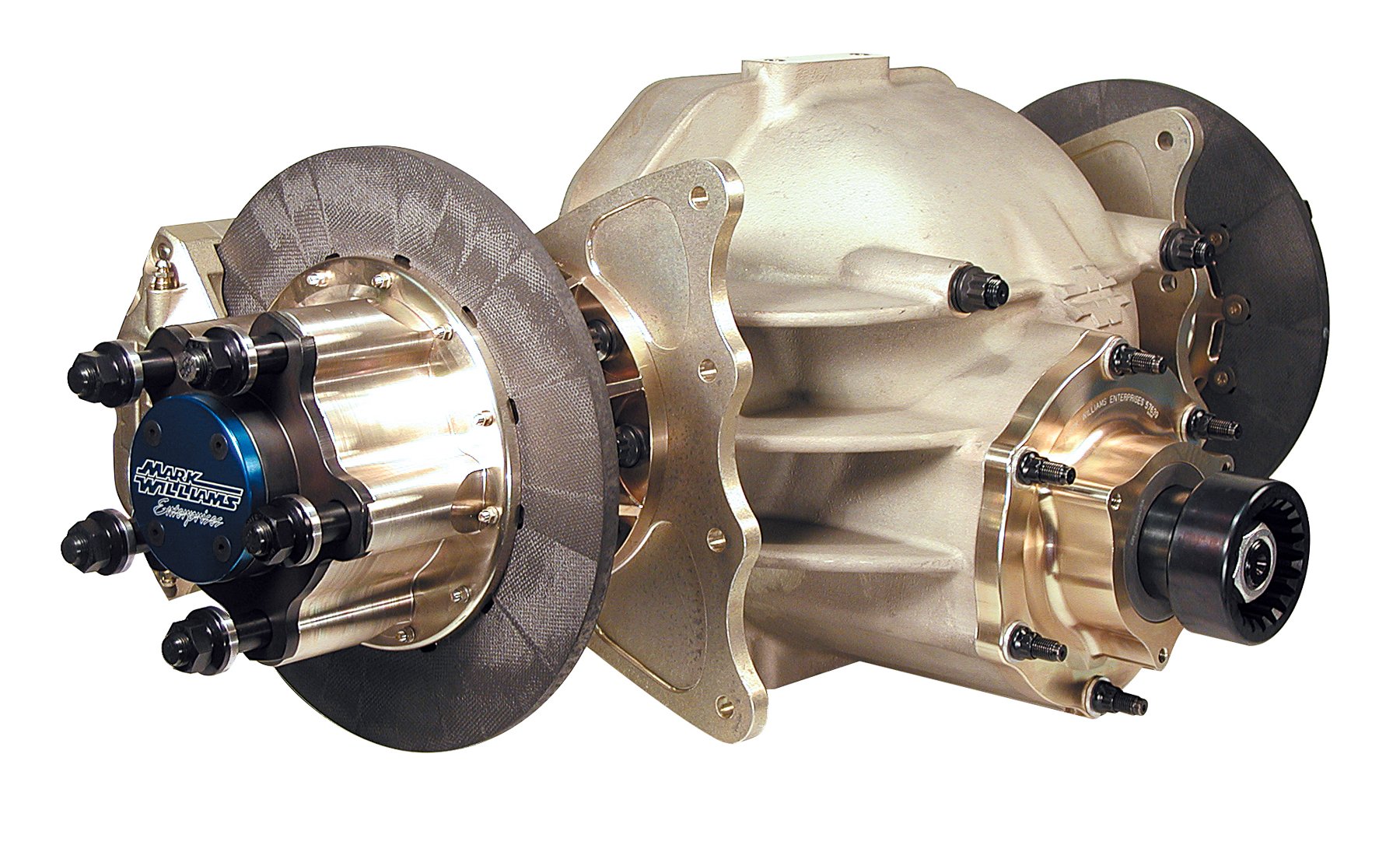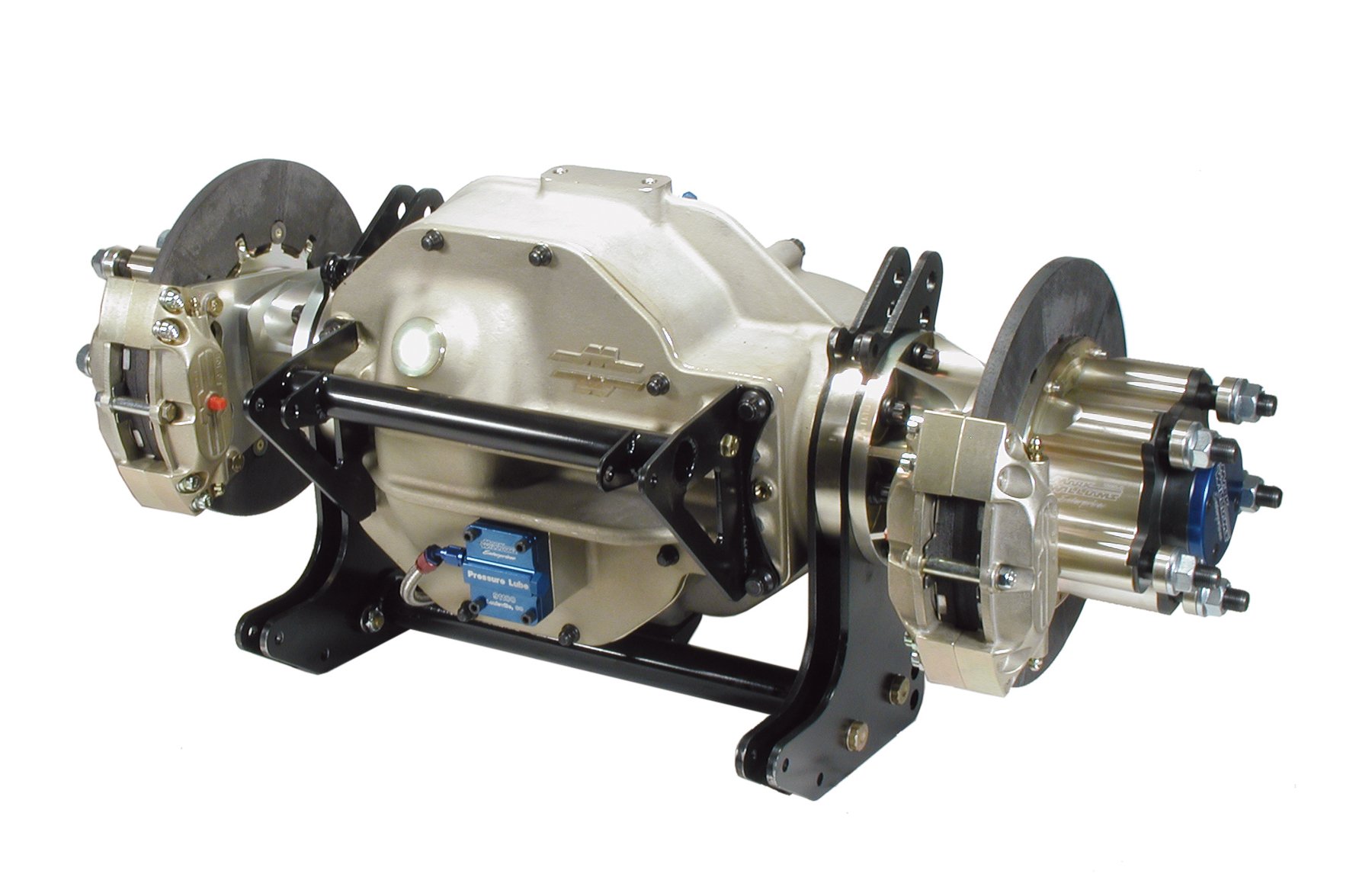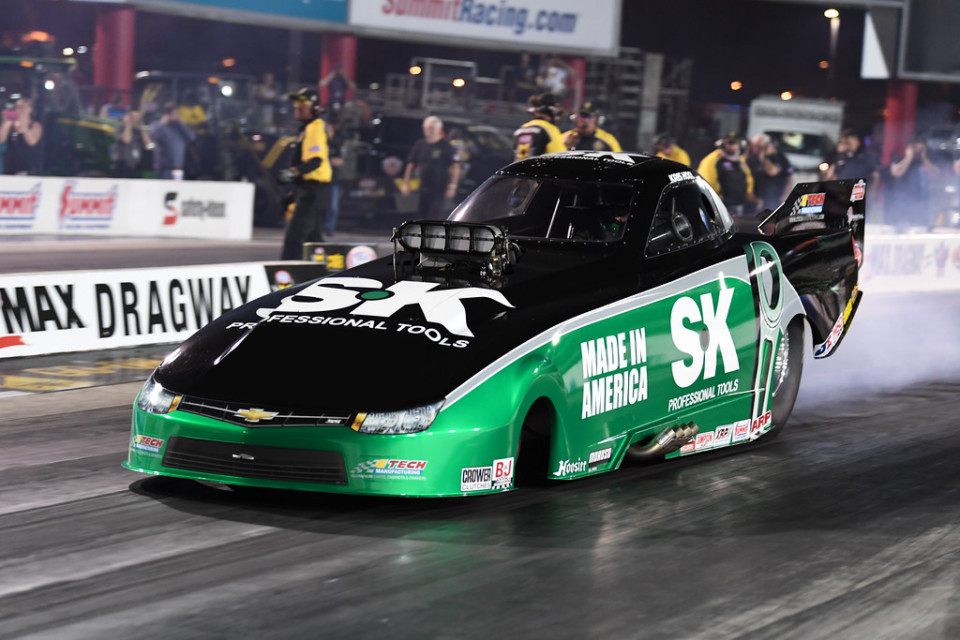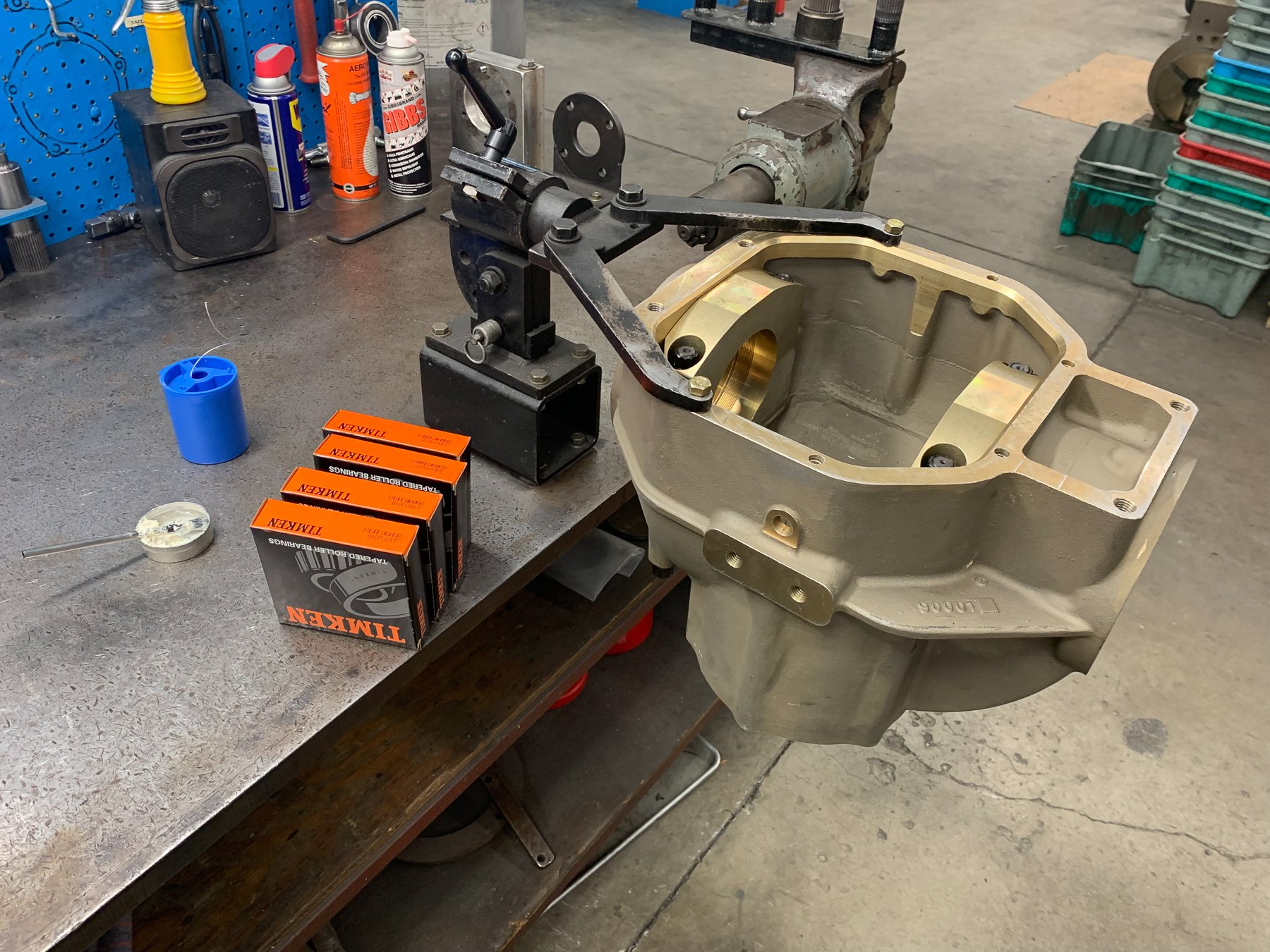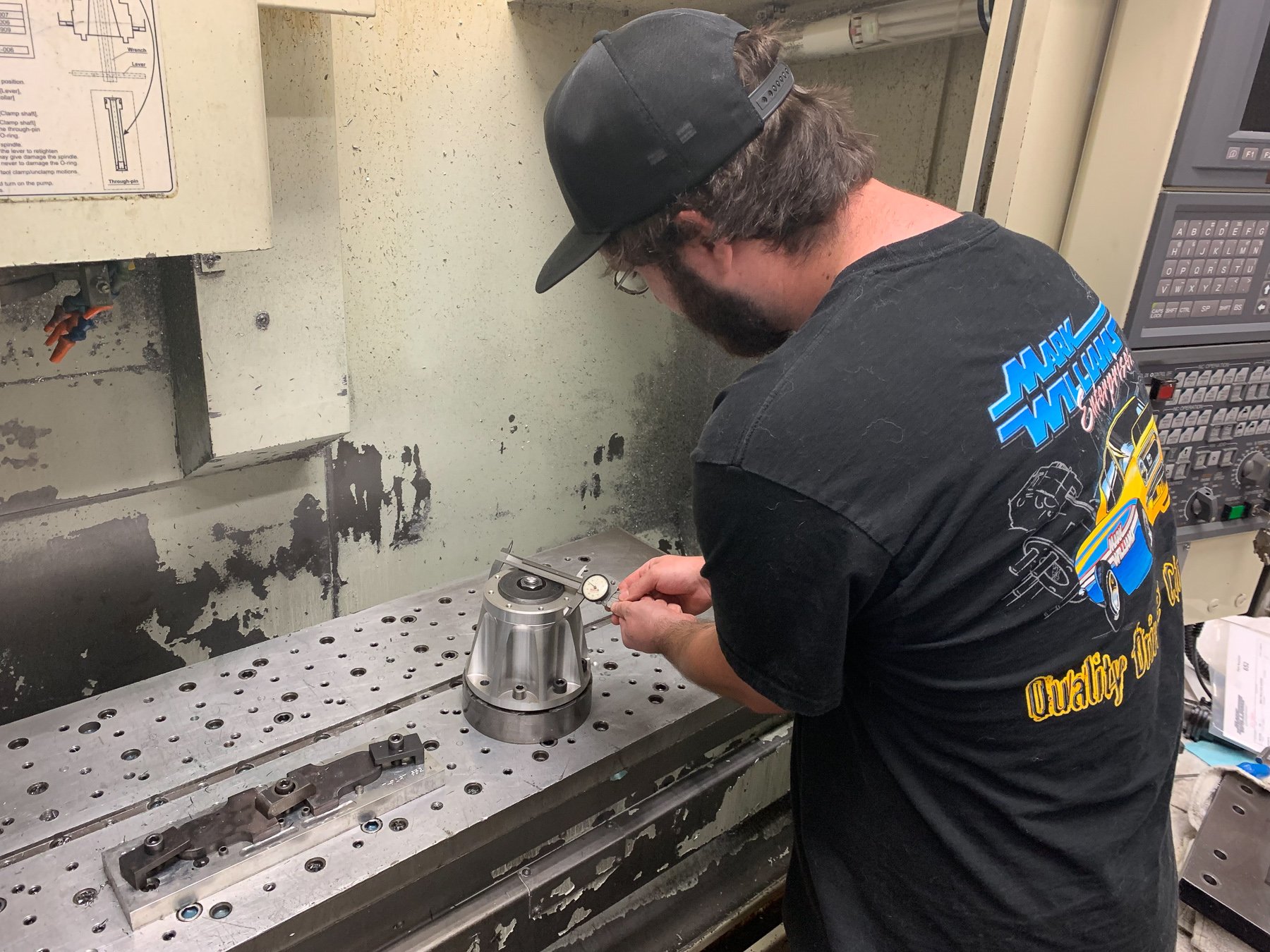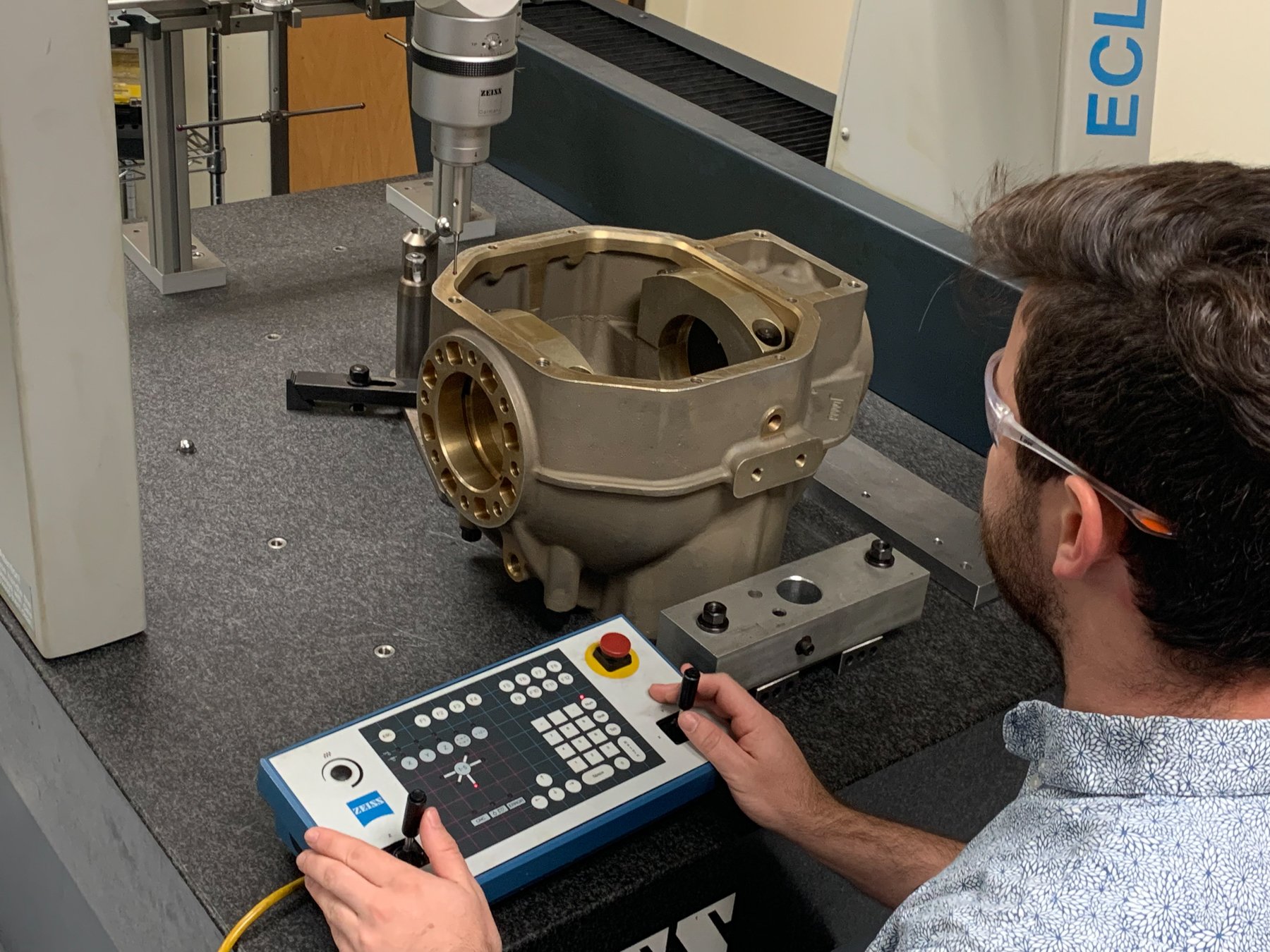The venerable 9-inch rear end, originally offered in 1957-1987 Ford cars and light trucks, has been a staple of drag racing for over 50 years. Its beefy 9-inch ring gear proved to be an effective alternative to the 8-3/4 Mopar and GM 12-bolt (8.875-inch diameter ring gear) housings of the era, with other attributes also a factor in its popularity. The Ford’s removable carrier design made it easy to swap gear sets, and the aftermarket responded by offering over two dozen ratios between 3.00 and 6.50:1.
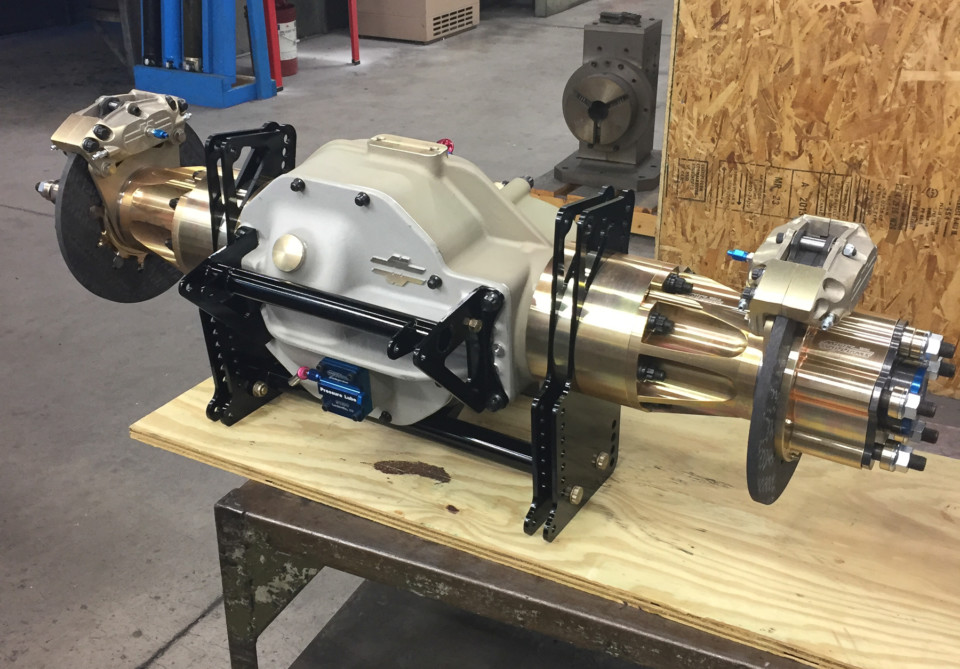
Funny Cars and Dragsters typically employ a solid rear end mounting, like this Full-Floater with carbon/carbon brakes. There’s a 2-year warranty on the gears. M-W offers 11” housings in both solid-mount and 4-link configurations. The assembly shown here has steel 4-link mounts and mostly used in high powered “door cars” like Pro Mod and “Outlaw” classes. The end bells and mounts are interchangeable.
Highly respected driveline products manufacturer Mark Williams Enterprises took the 9-inch Ford to the next level by developing the industry’s first modular aluminum housing for the genre. Through use of CNC-machined components, the precise alignment of gears and axles assures optimum efficiency through mitigating performance-robbing friction. Interchangeable end bells facilitate a variety of housing widths and mounting options (solid or 4-link), as well as bearing sizes. The modular approach also facilitates using the housing in multiple vehicles and switching between 4-link and solid mounts.
Many racers hang on to the idea that the 9-1/2 and 10-inch gear sets account for quicker ETs because of the lighter weight, but that line of reasoning has its flaws. – Mark Williams
To increase the housing’s ability to withstand increasing amounts of power, special 9.5-inch pitch diameter gears (physical diameter 9.250-inch) and 10-inch pitch diameter (actual diameter 9.400-inch) were offered and the carrier case clearanced accordingly. The basic 9-inch rear end has been pushed to its limits.
In Williams’ own words, “The 9-inch and variants of the basic design was reaching the limits —especially with blown and nitrous-boosted cars. The utilization of the larger diameter gears within the constraints of the 9-inch Ford housing still has gear life limits, even with the 9.5- and 10-inch variations. The 11-inch gear was a clean sheet approach with the bearing and spline sizes that is in proportion to the larger gear pitch diameter. The rear is called an 11-inch but it is actually designed with a 12-inch pitch diameter gear.”
(Left) Here’s one of M-W’s exclusive 11-inch gears (12-inch pitch diameter) compared to a standard 9” Ford. They’re warranted for 2 years. Also shown is spool bearing comparison.
In designing the housing, M-W called upon lessons learned from its history with its highly successful 9-inch Ford unit. The 11-inch housing is cast from the same aircraft aluminum alloy as its little brother, and incorporates a through-bolt design for securing the bearing caps —originally developed by Williams. The end bells are interchangeable, which facilitates upgrading from a 9- to an 11-inch housing, and a similar hypoid location bodes well for adapting it to existing drivelines, although the driveshaft may need to be shortened.
M-W’s 11-inch housings are employed in many Dragsters, Altereds and Funny Cars with solid-mounted rear ends. (Left) M-W’s 11-inch housings are employed in many Dragsters, Altereds and Funny Cars with solid-mounted rear ends. (Center) Four-link setups (narrow as 16” centers) are ideally suited for ultra high horsepower door cars (Pro Mod, Outlaw, etc.)(Right) A front view of M-W’s 11-inch housing that shows the optional pump to circulate the gear lube and cool it.
While the ring gears measures 11-inches in diameter, it’s machined with a 12-inch pitch diameter —which moves the “sweet spot” for set-up slightly outboard and reduces contact stress and friction where the pinion meshes with the ring gear. At what point is the 11-inch rear end recommended over a highly modified 9-inch unit? “When the gear life of the 9-1/2 and 10-inch ring and pinions becomes short, it’s time to move up to the 11-inch housing,” Williams says.
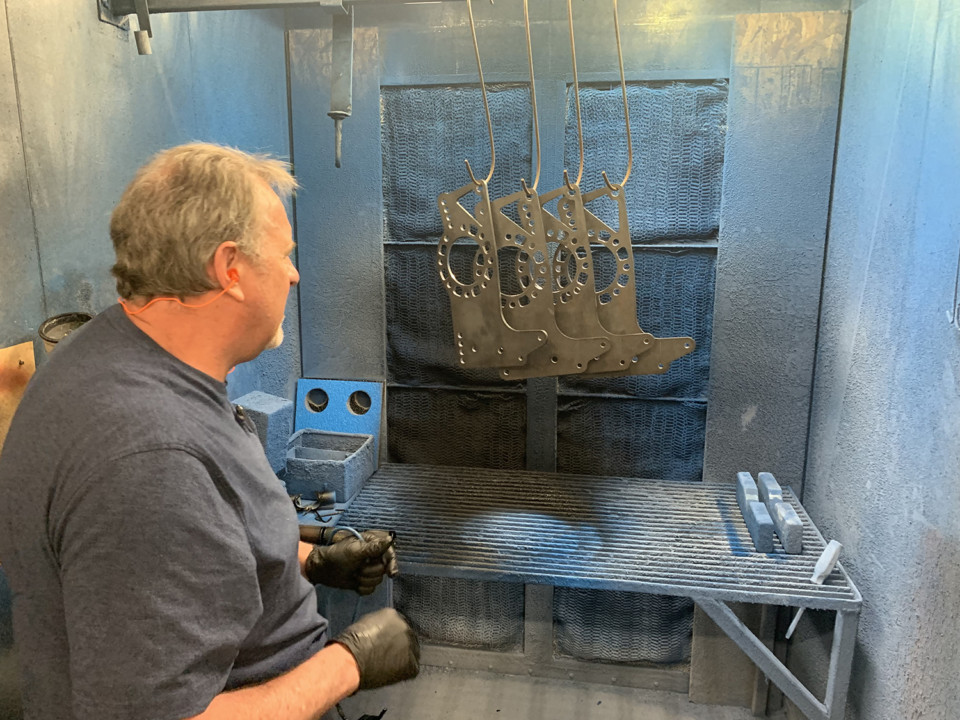
Both aluminum and steel 4-link brackets are offered, with chrome moly (shown being painted) preferred by many racers.
“Many racers hang on to the idea that the 9-1/2 and 10-inch gear sets account for quicker ETs because of the lighter weight, but that line of reasoning has its flaws. The surface contact area and the load applied is greater with a larger pitch diameter. The increased surface area reduces the PSI loading, resulting in less friction loss. When you are experiencing premature gear wear you are also loosing torque energy from the differential.”
Currently there are nearly a dozen ratios available (2.91 to 5.83:1), with custom ratios available to anyone who purchases two or more sets (a nominal engineering fee is required).
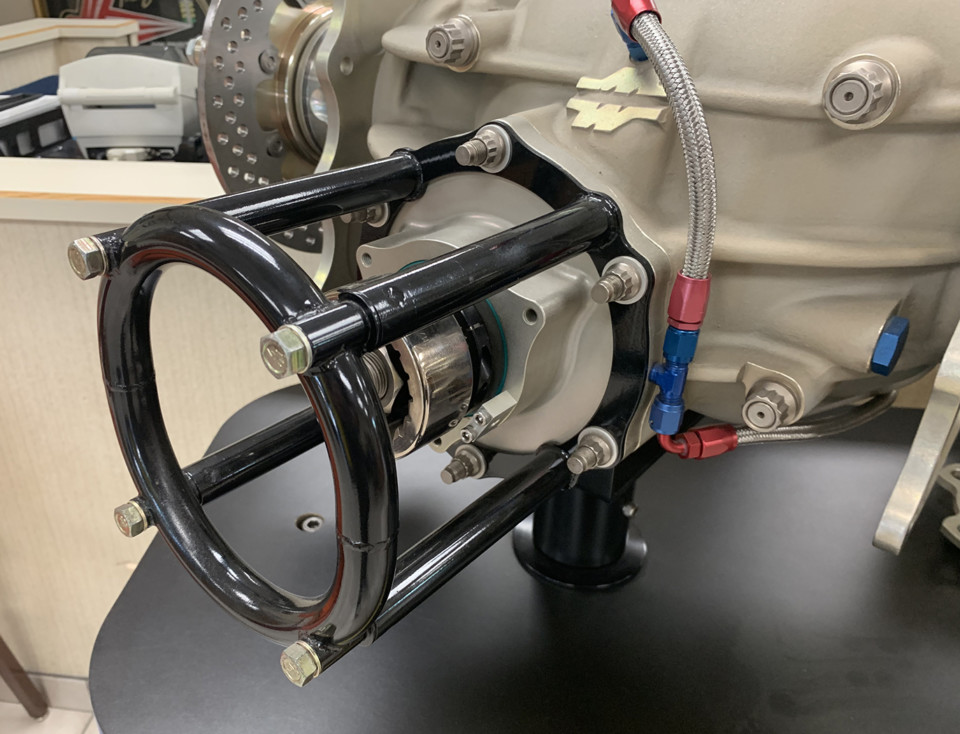
A popular option for any housing is this chrome moly driveshaft hoop that complies with NHRA requirements.
The reliability of these 11-inch housings has proven to be exceptional, with racers reporting hundreds and hundreds of runs without any gear failures. Bolstered by this, M-W backs each of its 11-inch housings with a two-year warranty against gear breakage. The rationale was simple, according to Williams: “We have a high confidence in the design backed with the history of successful usage for many years. This proven track record has allowed us to offer an extended warranty.”
The 9-inch and variants of the basic design was reaching the limits —especially with blown and nitrous-boosted cars. – Mark Williams
An excellent testimony as to the unit’s durability comes from highly respected Top Alcohol Funny Car racers Kris and Kevin Hool. Their Camaro is a serious contender at any race, and there are some Wally’s back at their Casper, Wyoming shop to back it up. The loyalty is simple, according to Kris Hool.
“We had 611 runs on our first car and never even chipped a gear. When we built our new car this last year we naturally put an M-W 11-inch rear end in it. So far it’s got nearly 100 runs with no problems. Since it’s just my brother and I that run this car we don’t have time to keep fixing it or setting up new gears. K and K Motorsports will never run anything but M-W.”
With engine builders and tuners pushing the performance envelope to incredible levels, an increasing number of racecars are ideally suited to use the MW 11-inch rear end —which in its most exotic form sports full-floater axles and carbon/carbon disc brakes. They include Pro Mod, Alcohol Funny Car and Dragster, various “Outlaw” classes, plus nostalgia Fuel Dragsters, Funny Cars, and Fuel Altereds.
(Left) Assembly begins using one of M-W’s innovative Bench Mules to hold the carrier. It can be used for a variety of other tasks. (Center) M-W machinist shown checking an end bell. They come in a variety of sizes to facilitate making the housing widths to spec.
The 11-inch rear end assembly does cost more than a 9-inch setup, but there are offsetting advantages. As Williams puts it, “This is a mature product with a history of successful use in drag racing —including turbocharged Pro Mod cars with lock-up converters. Sure, the initial cost is more expensive than a 9- or 10-inch Ford type, but the payback period is very short. With this unit in place it eliminates failure concerns of the driveline system. Plus there’s the knowledge that with this unit in place it virtually eliminates any failure concerns in the driveline.”
When it comes to rear ends and horsepower, size does matter!
Ed. note: text was produced and provided by Mark Williams Enterprises

